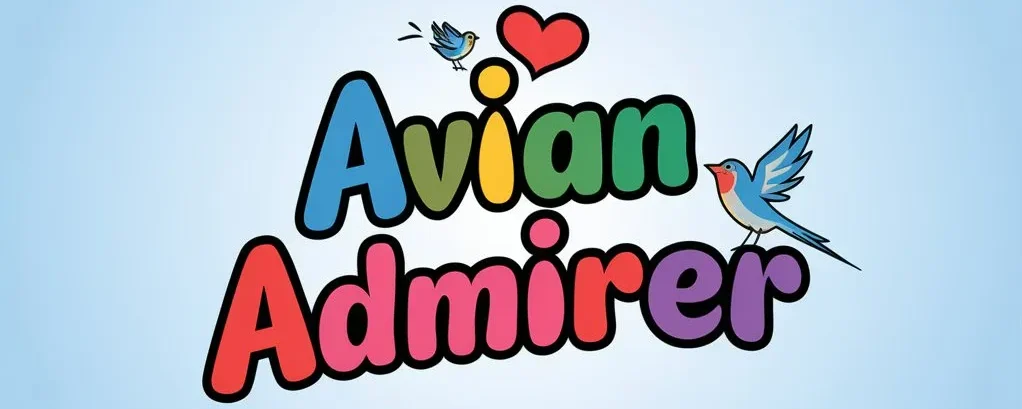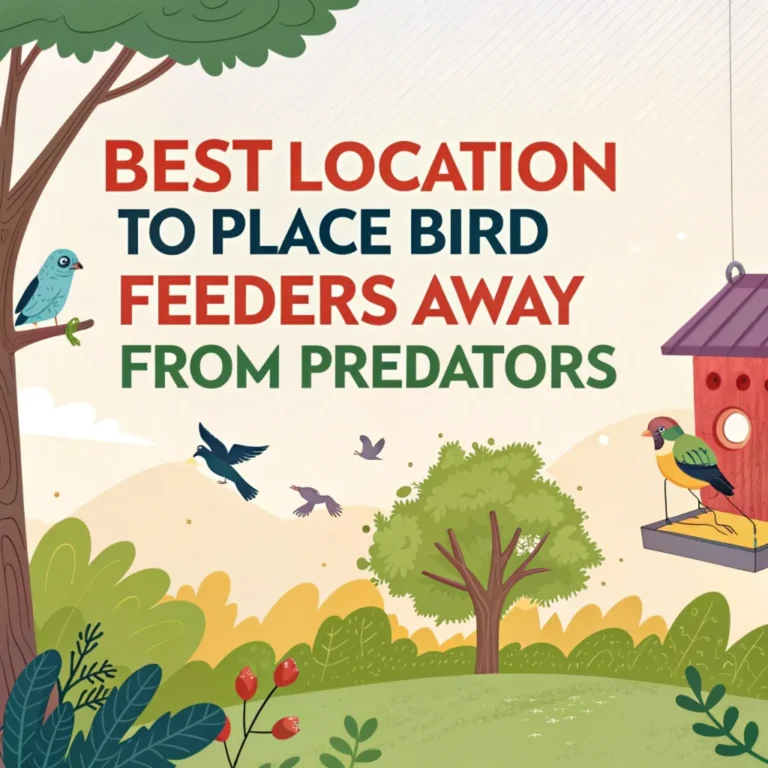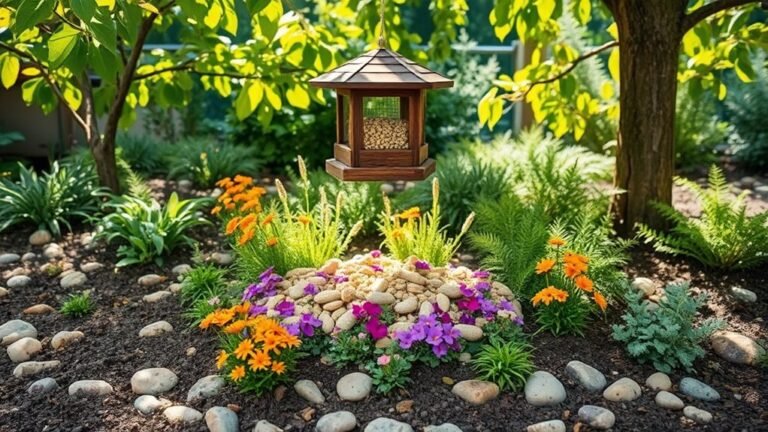How to Stop Birds From Flying Into Windows: Practical Solutions
Bird-window collisions kill many birds every year. These accidents happen because birds see reflections in windows and think they are flying into open spaces. Understanding why this occurs helps in finding ways to reduce these incidents. By making small changes, you can protect birds and improve your home environment. What practical steps can you take to make windows safer for birds?
Key Takeaways
To stop birds from flying into windows, you can use several effective methods:
- Install Window Films: Apply window films or patterned stickers to your windows. These create visual barriers that disrupt reflections, helping birds recognize that the windows are solid.
- Use Screens: Install screens or ultrafine mesh netting. These can prevent bird collisions while still allowing airflow and maintaining visibility.
- Monitor Bird Activity: Keep an eye on bird activity near your windows. This can help you find high-risk areas where protective measures may be needed.
- Create Bird-Friendly Spaces: Design your outdoor area with native plants and water sources. This supports birds while reducing the chances of window collisions.
- Add Visual Breaks: Make sure your windows have visual breaks, especially during migration seasons. This can significantly enhance the safety of birds.
By following these steps, you can help protect birds and reduce the likelihood of window collisions.
Understanding the Problem: Why Birds Fly Into Windows
Why do birds often fly into windows? This issue relates to bird behavior and window design. Birds see reflections in glass as open spaces and mistakenly think they're safe areas to fly into.
During the evening, bright lights in windows can further confuse birds, increasing the chance of collisions. Poor window design, which lacks visual cues or barriers, makes this problem worse.
Birds rely on visual signals to understand their surroundings. When these signals are blocked or reflected, they struggle to judge their environment correctly.
By recognizing these factors, you can create spaces that help protect birds. Learning about bird behavior and how to improve window design can foster a safer environment for both birds and humans.
Simple changes could make a big difference, ensuring a more harmonious coexistence.
Assessing Your Windows: Identifying High-Risk Areas
How can you identify which windows are risky for birds? Start by checking your window types. Large glass surfaces or reflective panes often attract birds, especially during migration seasons.
Look for windows without visual breaks; these can be dangerous. Observe bird behavior near windows. Do you see birds flying close to specific ones? Pay attention to locations near feeders or nesting areas, as these can be high-risk spots.
Examine the angles of your windows in relation to trees or gardens. Reflective or clear windows near vegetation can confuse birds. By looking at these factors, you can find areas that need changes to protect birds.
Using Window Films and Stickers for Visibility
If you want to improve window visibility and decrease bird collisions, consider using window films and stickers.
Different types of window films, such as etched, frosted, or patterned, create a visual barrier that birds can see, reducing the chances of collisions. These films allow you to maintain your view while making your windows safer.
Bird-safe stickers are another simple tool to enhance visibility. Placing these stickers strategically can break up reflections, signaling to birds that your windows are solid.
Installing Screens or Mesh Netting
Screens or mesh netting effectively prevent birds from hitting windows while allowing fresh air and light to enter. Choosing the right type is important for good protection.
Here are three effective options:
- Traditional Window Screens: These screens create a barrier against birds but still let air flow through.
- Ultrafine Mesh Netting: This lightweight option is almost invisible and lets in a lot of light.
- Retractable Screens: These screens can be easily pulled down when needed and retracted when not in use.
These choices help keep both birds safe and your home bright and airy.
Planting Vegetation Near Windows for Natural Barriers
Installing screens can help protect birds from window collisions. However, planting native plants near your windows is another effective method. These plants create a natural habitat that offers food and shelter for local birds. This reduces collisions since birds are less likely to fly into reflective glass.
Additionally, positioning shrubs and trees can act as visual barriers, making windows less attractive as flight paths.
Native vegetation also supports pollinators and other wildlife, enhancing biodiversity in your area. By planting these native species, you foster a connection to your local ecosystem.
This approach not only aids in bird protection but also enriches your surroundings. Embracing these natural solutions helps you feel more connected to nature and responsible for protecting wildlife.
Employing Reflective Materials to Deter Birds
Reflective materials can help prevent bird collisions with windows by altering how birds see glass surfaces.
Using reflective window films and bird-safe materials can significantly reduce these incidents. Here are three effective options:
- Reflective Window Films: Install these films on your windows. The shiny surface confuses birds and stops collisions.
- Bird Safe Materials: Add external shades or awnings with reflective textures. These create a barrier that makes glass less visible.
- Decals and Stickers: Place reflective decals designed for birds on your windows. They break up reflections and make glass more noticeable.
Implementing these solutions can create a safer environment for birds while improving the look of your home.
Take action today for a harmonious coexistence with nature!
Hanging Decorative Items to Break Up Reflections
Hanging decorative items like wind chimes and plants can effectively reduce reflections on your windows. This helps to make your windows less inviting for birds. By placing windcatchers and chimes in specific locations, you disrupt the smooth surface of the glass. This change decreases the illusion of open space, which can lead birds to fly into your windows.
The movement and sounds from these decorations attract birds but encourage them to steer clear of your windows.
Using various colors and materials can improve visibility. This makes your windows less appealing for birds trying to fly. Adding these decorative elements beautifies your space. It also shows you care about the safety of the birds in your area.
This simple step can create a friendly environment for both you and your feathered neighbors.
Creating a Bird-Friendly Environment Outside
Creating a bird-friendly environment outside enhances your garden and helps prevent birds from flying into windows. You can support bird conservation by making your space welcoming.
Here are three simple ways to create a bird-friendly area:
- Plant Native Species: Use plants that grow naturally in your area. These plants provide food and shelter for local birds, which helps increase their numbers.
- Offer Nesting Opportunities: Place birdhouses in your yard or leave some bushes and grasses untrimmed. This gives birds safe spots to build their nests.
- Create Water Sources: Add birdbaths or small ponds to your garden. Fresh water attracts birds, helping them stay hydrated and encouraging them to visit.
Educating Neighbors and Your Community
Many people don't know that windows can harm birds. You can help reduce this risk by educating your neighbors and community. Start by talking to friends and family about the issue. Use social media to spread the message.
Organize workshops to teach people about bird-window collisions and how to prevent them. These workshops can show practical solutions like window decals or screens, and encourage attendees to participate in discussions.
Engaging local environmental groups can strengthen your efforts. Their expertise can help more people understand the importance of protecting birds.
When families work together to save wildlife, they create a stronger community and make their neighborhood safer for birds.
Monitoring and Adjusting Your Solutions for Effectiveness
To reduce bird-window collisions effectively, monitor your strategies regularly. This approach protects wildlife and connects you with your community.
Follow these simple steps to assess and improve your solutions:
- Count Bird Collisions: Keep a record of how many birds collide with your windows during a specific time frame.
- Check Visual Barriers: Ensure the materials you used, such as decals or films, remain intact and visible to birds.
- Request Feedback: Talk to local birdwatchers or neighbors for their suggestions on improving your methods.
Frequently Asked Questions
What Types of Birds Are Most Likely to Collide With Windows?
In urban areas, sparrows and finches are the birds that most often hit windows. They are attracted to reflections and confusing spaces, which increases their chances of colliding with glass. It is important to be aware of this to promote bird-friendly practices. Simple actions can help protect these birds and reduce window strikes.
Will Bird Collisions Cause Damage to My Windows?
Yes, bird collisions can damage your windows. Birds sometimes fly into windows because they do not see them clearly. If this happens repeatedly, you may need to repair your windows, which can be costly and change how your home looks. To help prevent these collisions, you can learn about bird behavior and try different methods to make your windows safer.
Are There Specific Times of Year When Bird Collisions Are More Frequent?
Bird collisions happen more often in spring and fall during migration. During these times, birds change their behaviors and often fly through cities. This increases their risk of hitting windows. Being aware of this can help prevent collisions. Protecting birds is important for our environment. You can take steps, like adding window decals or moving bird feeders away from windows, to keep them safe.
How Can I Educate Children About Bird Safety Near Windows?
You can teach kids about bird safety near windows through simple activities. Start by bird watching together. Help them identify different bird species and talk about where these birds live. Explain why it is important to protect birds. Show them how windows can be dangerous for birds and encourage them to take steps to keep birds safe. Make it fun and engaging by using games and crafts related to birds and their habitats. This will help children understand and remember the importance of bird safety.
What Are the Best Types of Window Films for Bird Visibility?
To improve bird visibility, use window films with decorative patterns and UV blocking features. These films provide visual signals for birds and reduce harmful light exposure. This promotes bird safety and helps them feel more connected to their natural surroundings.

Ava is a bird enthusiast and nature lover who has spent countless hours observing and learning about the fascinating world of birds. With a passion for sharing her knowledge and inspiring others to appreciate the beauty of birds, Ava writes about her experiences and insights on avianadmirer.com.







